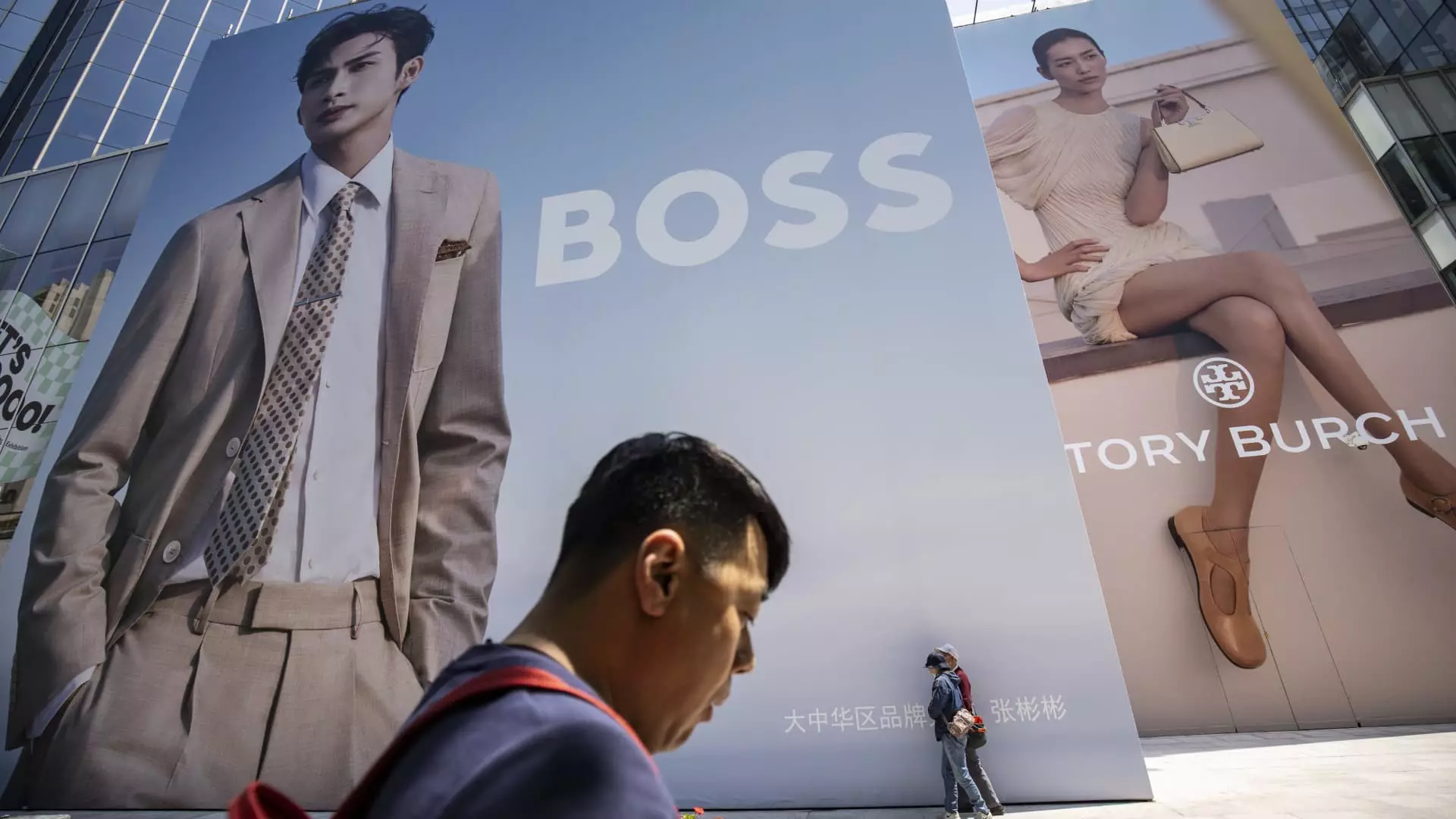The European luxury market is at a critical juncture, as analysts project a worrying decline in demand, specifically highlighting the changing consumer behaviors of high-spending Chinese buyers. Recent analyses suggest that brands such as Hugo Boss are particularly feeling the pinch, with shares dropping nearly 4% after Bank of America Securities marked it down from “buy” to “underperform.” This financial downturn signals a crucial acknowledgment that the post-pandemic revenues achieved in 2022 might have been unsustainable.
The luxury sector has traditionally relied on strong consumer sentiment in markets like China, but analysts note a considerable slowdown in spending that could define the second half of the fiscal year. The Bank of America analysts noted that initial normalization began with American consumers, followed by European, Korean, and Japanese markets. However, with the Chinese consumer—typically the linchpin of luxury spending—now showing signs of fatigue, the forecast becomes increasingly bleak. They labeled the situation as “all shopped out,” pointing to a significant contraction in both domestic and travel demand from China.
In a landscape that appears increasingly hostile to luxury retailers, major brands are bracing for potential revenue declines. For instance, forecasts predict a 1% revenue drop for European luxury brands by 2024. Companies like Hugo Boss have already cited ongoing macroeconomic and geopolitical challenges, especially with regard to significant markets like China and the United Kingdom. Comparatively, Burberry shares fell nearly 3% on a similar downgrade, emblematic of a larger adverse trend impacting the luxury sector.
Luxury conglomerates such as LVMH and Kering are not exempt from this trend. After dipping from a “buy” to a “neutral” rating, LVMH shares reached lows not seen since July 2022. Analysts express concern that these established giants are now under significant pressure, particularly as younger consumers—who have a penchant for aspirational purchases—appear to be re-evaluating their spending habits. This volatility raises serious questions about the long-term sustainability of previously favored brands like Burberry and Gucci, which are now reassessing their market positioning.
Several external factors compound the existing tribulations within the luxury sector. The property market struggles in China loom large, creating a ripple effect that adversely impacts luxury buying behaviors. Similarly, uncertainties linked to geopolitical tensions—especially with impending U.S. elections—have introduced new layers of unpredictability.
Jon Cox’s insights provide a critical lens through which to analyze the overarching landscape. He notes that the rapid ascent of China as a major player in the luxury market may have peaked, and current market conditions do not present any optimistic recovery trends for the remainder of the year. In essence, luxury firms may be facing a “prolonged period of weakness,” deviating from the expected recovery.
As market vulnerabilities persist, consumer scrutiny has intensified. Brands like Kering and Burberry now face daunting challenges in winning back a fickle demographic that has become increasingly conscientious about spending. For these brands, the path to recovery is fraught with obstacles, and investor patience seems to be waning. The current climate necessitates a strategic overhaul for many luxury retailers, especially those who’ve pinned their hopes on a timing that may not align with market realities.
Interestingly, other brands like Hermès continue to capture investor interest and consumer affection through their well-positioned offerings. According to Cox, the diverse luxury landscape means that some names are poised to adapt and thrive, while others may find themselves sidelined due to strategic missteps.
Finally, looming tariff discussions amidst escalating trade tensions could further complicate the situation for luxury brands seeking to navigate this turbulent phase. Susannah Streeter has raised alarms regarding potential Chinese tariffs on luxury goods as a countermeasure following policy moves by Brussels towards Chinese electric vehicles. Such tariffs could sting luxury retailers that depend heavily on the Chinese market.
The European luxury sector stands at a crossroads, facing a myriad of challenges ranging from shifting consumer preferences to geopolitical tensions. The once-reliable growth trajectory appears increasingly fragile, and brands must recalibrate their strategies swiftly or risk being left behind in an ever-evolving marketplace.


Leave a Reply